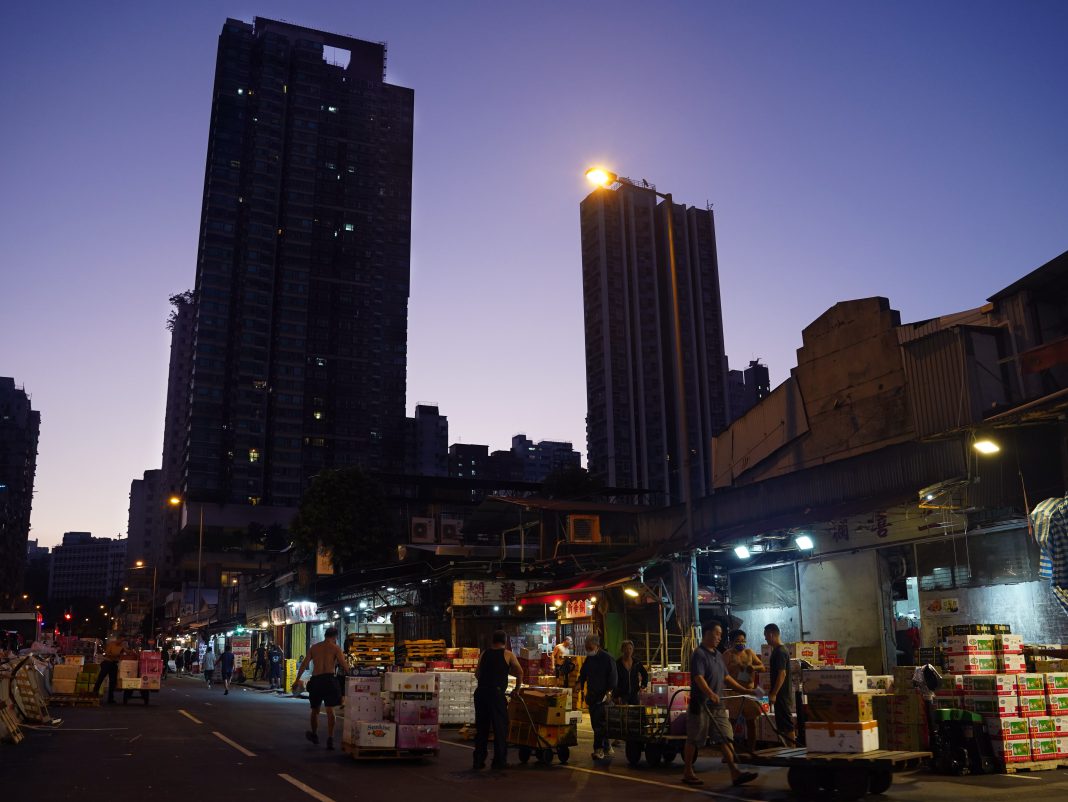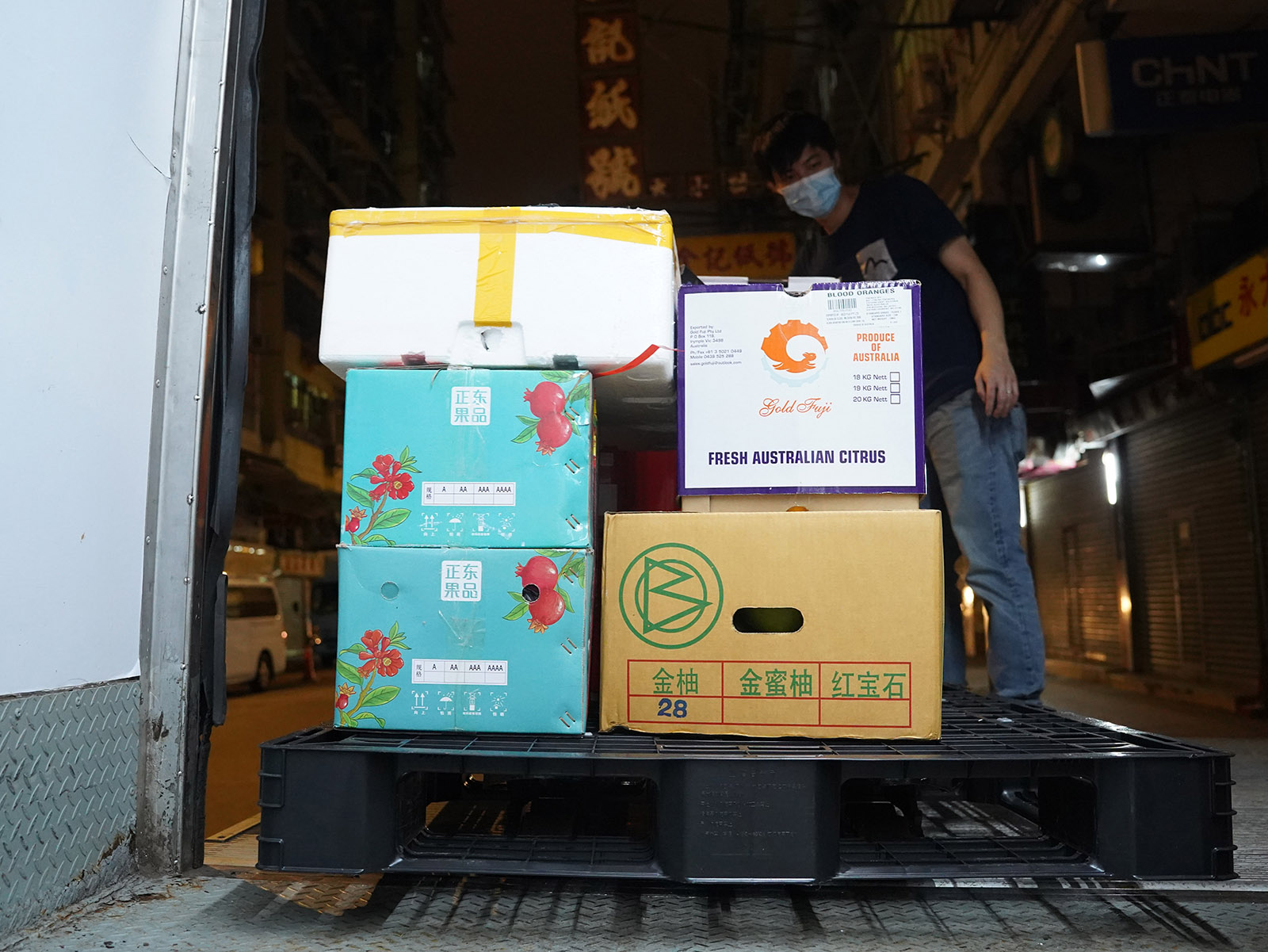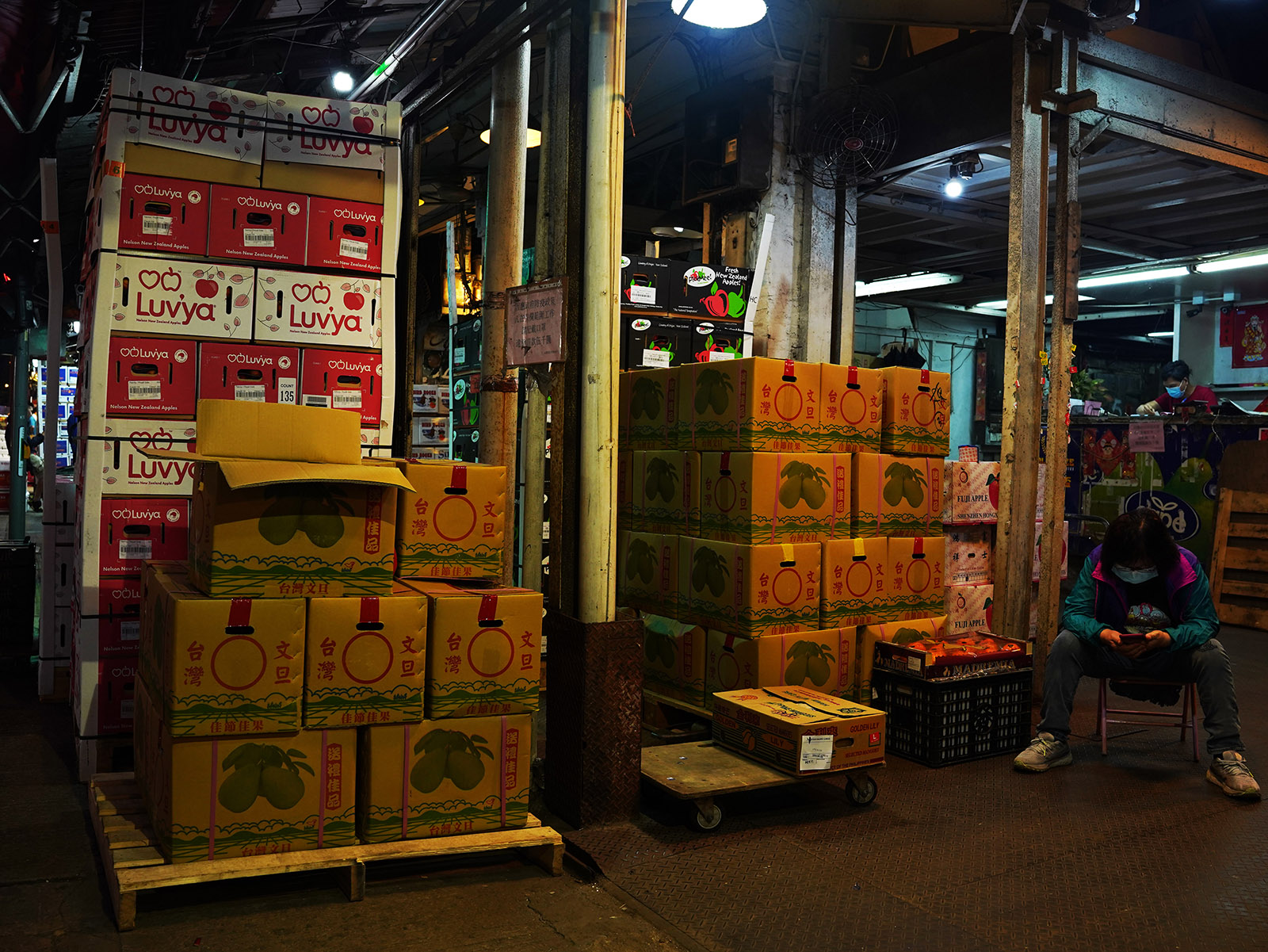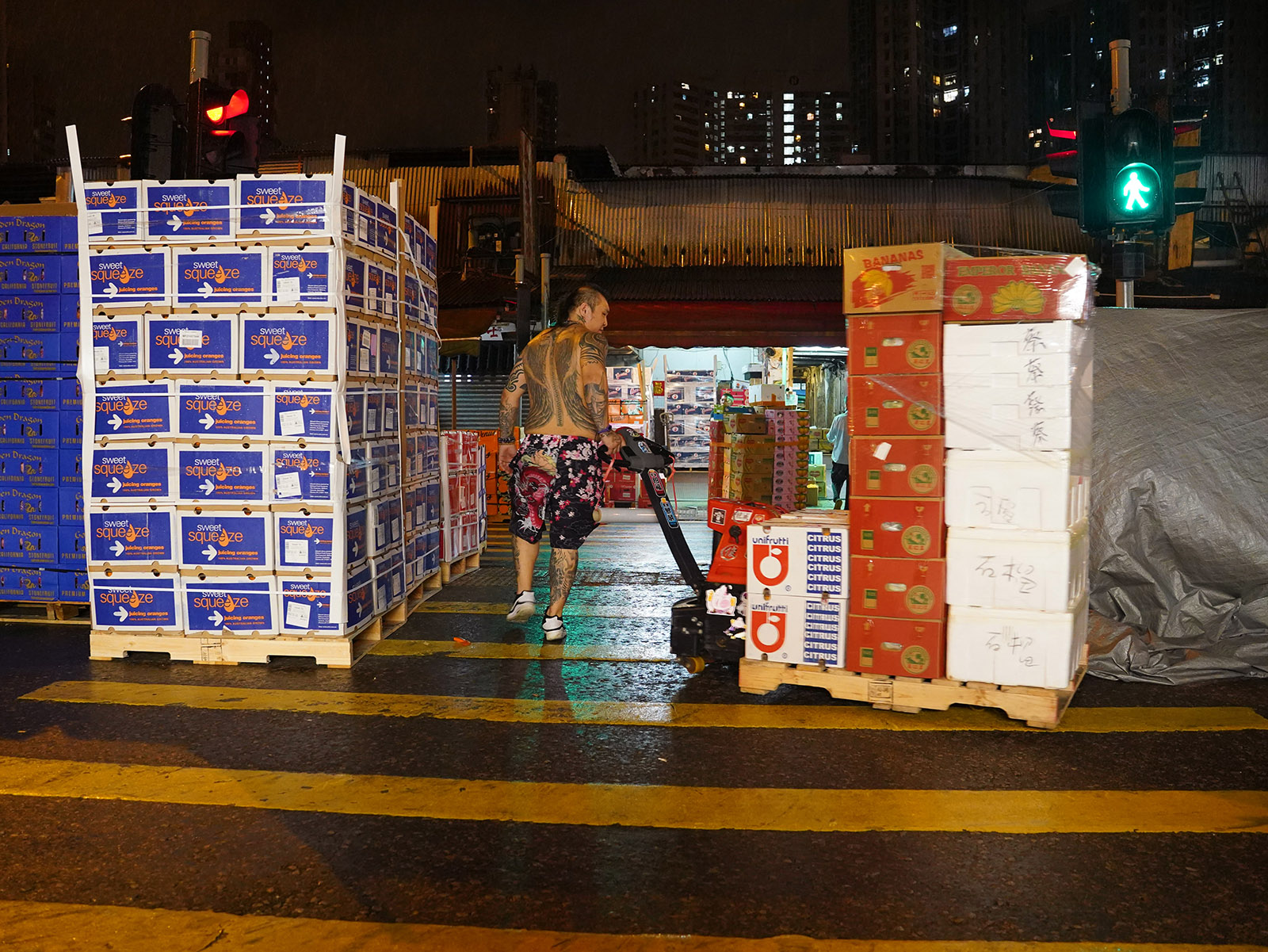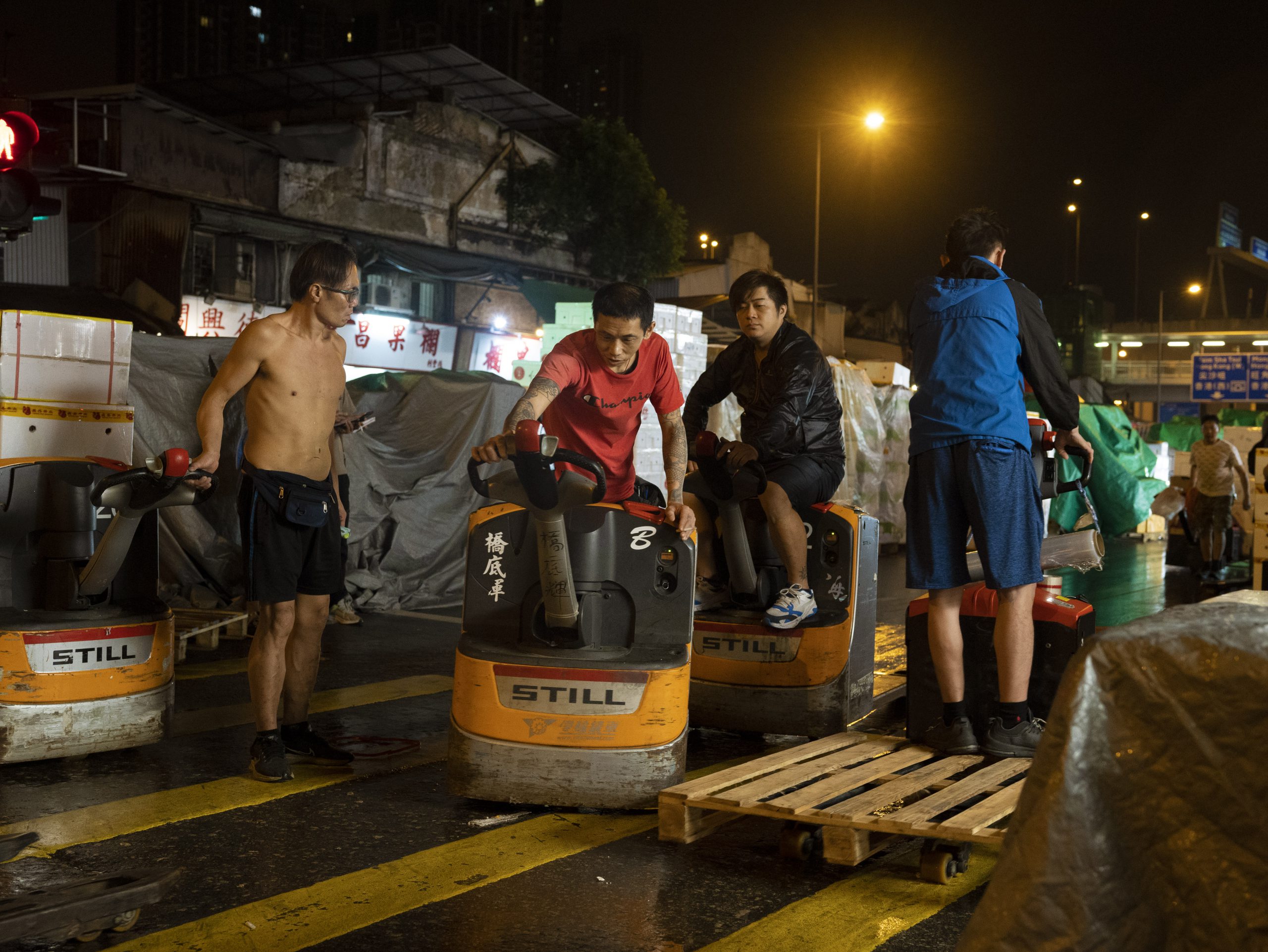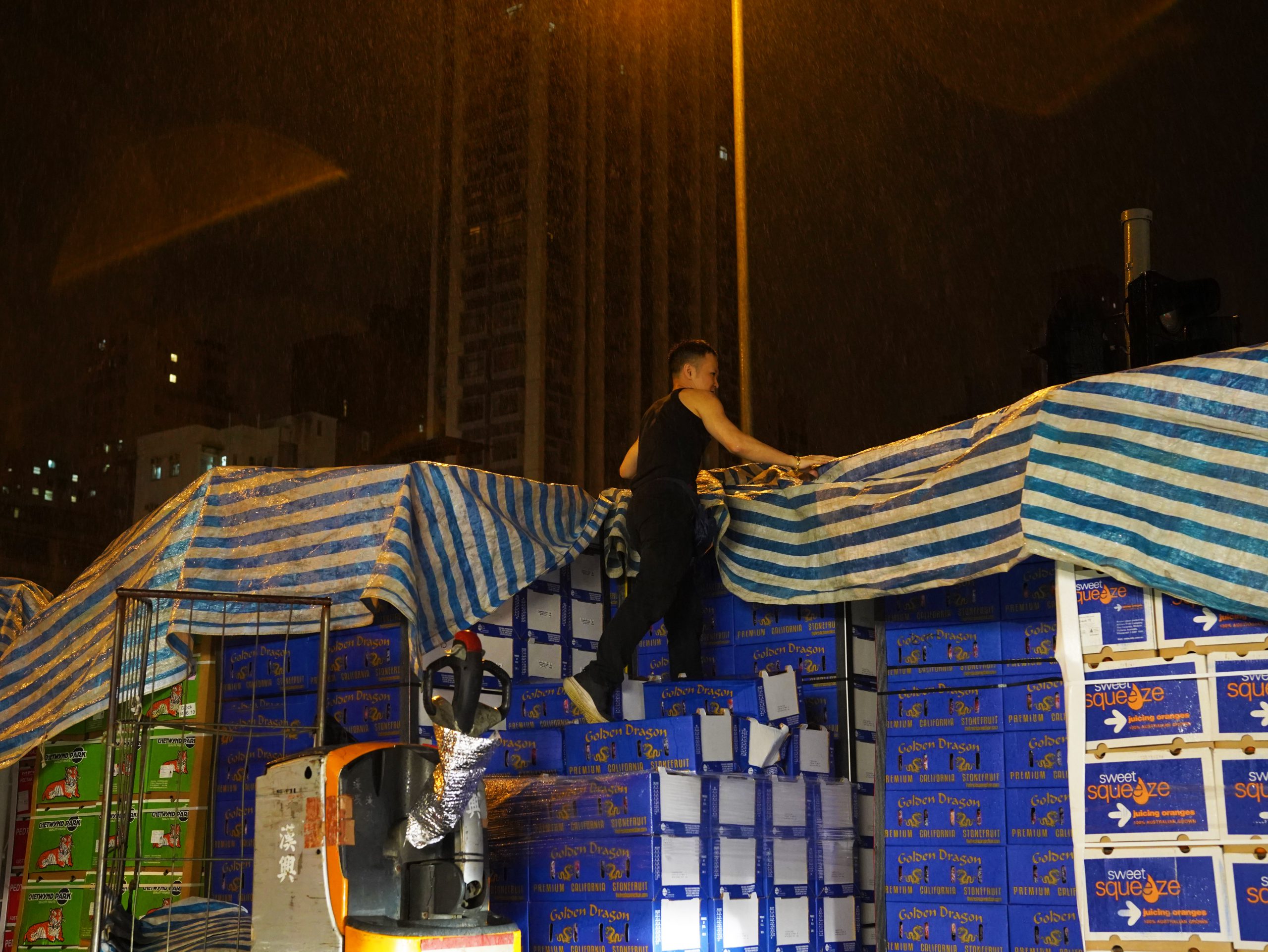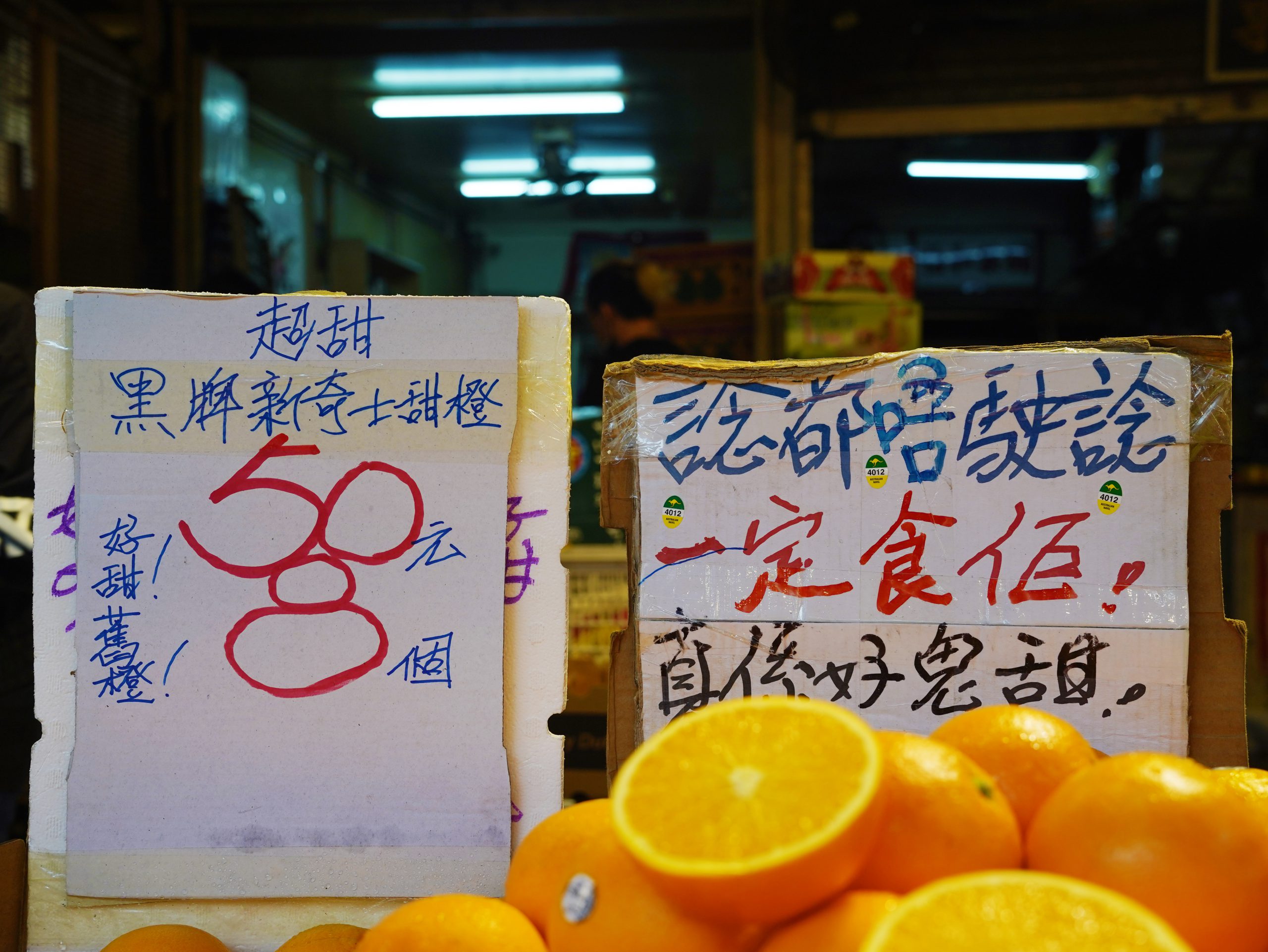Vendors recall the good old days at the Yau Ma Tei Fruit Market ahead of an urban renewal plan that aims to revitalise the market into a tourist attraction.
By Gloria Chan Yi-lam
Stacks of boxes with fresh fruit from different countries fill up Waterloo Road, Shek Lung Street, and Reclamation Street. Middle-aged workers yell fruit names against the buzz of rumbling electric pallet jacks.
Hectic and chaotic it might seem, fruit vendors begin just another ordinary day of work at midnight in Yau Ma Tei Wholesale Market, Hong Kong’s biggest fruit market.
Like his fellow vendor, Jacky from Raw Fruit, a small stall on Waterloo Road of the market, starts his day at midnight.
“We arrive at the airport to collect fruit at around 10 p.m. and return to the fruit market at around 12 a.m. Our stall closes at around 4 a.m. after our customers pick up fruit they order from us,” says Jacky, owner of the stall, who declines to reveal his full name.
Jacky and his partner started doing fruit wholesale business five years ago. They took over the fruit stall from their mentor who taught them how to do business.
“My partner and I looked for fruit suppliers as we wanted to start a fruit stall. This is how we met our mentor. It is fate,” he recalls.
“My mentor operated the stall for around 30 years. We took over the stall after he migrated,” he says.
Jacky learns the industry’s vibrant history from his mentor. “There were more than a hundred fruit stalls before a fire accident in 2016…Those were the good old days of the fruit market. Now only around 30 stalls remain,” he sighs.
A three-alarm fire broke out at a stall near Shek Lung Street in Yau Ma Tei Wholesale Market on September 4, 2016. At least 10 fruit stalls were destroyed.
“Some stalls were destroyed and closed down after the fire. Fewer people are joining this business. The industry starts to die down,” he says.
Yau Ma Tei Wholesale Market was built in 1913. Originally named “Government Vegetables Market”, it once handled nearly all fresh food sold in Kowloon. In 1965, the government relocated the wholesale of vegetables, poultry, and fish to Cheung Sha Wan. Since then, the market has only operated wholesale business of fruit.
Commonly known as “guo laan”, meaning “fruit market” in Cantonese, the market stretches along Shek Lung Street. It was classified as a Grade 2 historic building by the Antiquities Advisory Board in 2009, covering an area of roughly 14,000 square metres.
Jacky says there are unwritten rules about the fruit market operation.
“Vendors can place fruit boxes on one of the two traffic lanes of Reclamation Road and Waterloo Road after 9 p.m.,” he says.
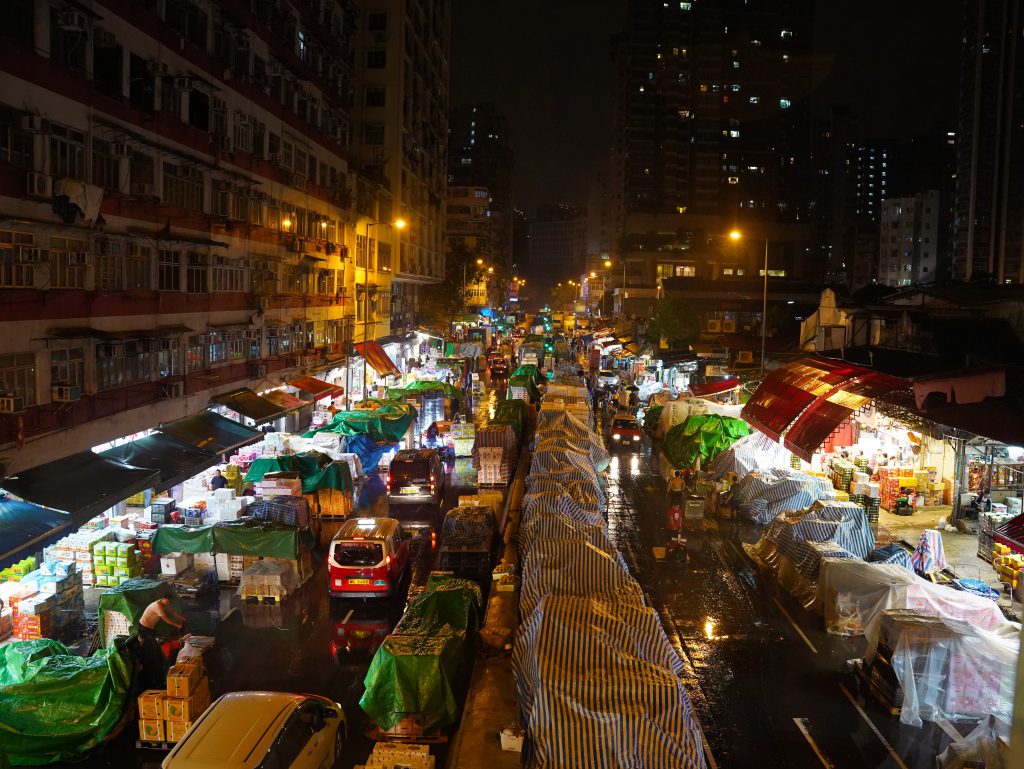
“Since some wholesale customers order a large amount of fruit, this (placing fruit boxes on traffic lanes) is convenient for them to collect their fruit,” he adds.
Over the years, Jacky has built a close tie with the customers. “There are loyal customers who have been buying fruit from our stall for many years,” he says, adding that he sells fruit to them at cost price to thank them for their support.
Despite this, Jacky says sometimes they are misunderstood. “Our burly figure makes others think we are unfriendly. But vendors are actually nice and patient. We share knowledge about fruit with customers and show them how to pick good quality fruit. It is okay to ask us questions, we will not scold you out of the blue,” he says.
But the flavour of the market is about to change.
The Urban Renewal Authority proposed a plan to revitalize Yau Ma Tei Wholesale Fruit Market to the Legislation Council in September this year.
Under the proposed plan, the market will be turned into a tourist spot, complemented by a new boutique hotel, open space and an art and cultural area. The wholesale operations will be relocated to a commercial building near the market at Hau Cheung Street.
Jacky finds the change hard to swallow.
“The flavour will be changed when the appearance and the location are changed. This is like copying Japan’s Shinsaibashi and pasting it into Hong Kong. People will not come once the original spirit is gone,” he sighs.
This is like copying Japan’s Shinsaibashi and pasting it into Hong Kong. People will not come once the original spirit is gone.
Jacky is not the only one who doubts the urban renewal plan. Suzanne Wu Sui-shan, former chairman of Working Group on Concern for Yau Ma Tei Fruit Market, says some fruit vendors do not want to turn the market into a tourist spot.
“Most fruit vendors think that their main customers are not tourists but people who live in the neighbourhood,” says Wu, who was also a district councilor in Yau Ma Tei for the past year.
Also she thinks the redevelopment plan will not solve traffic and noise problems in the district.
“Their (fruit vendors’) pallet jacks always occupy traffic lanes, which causes traffic jams,” she says, adding that the relocation will simply shift the traffic problems to another place.
Wu says there is a need to strike a balance between conservation and development. “(The government) does not necessarily have to destroy something old in order to develop the city,” she says.
Edited by Kelly Yu
Sub-edited by Isaiah Hui





































